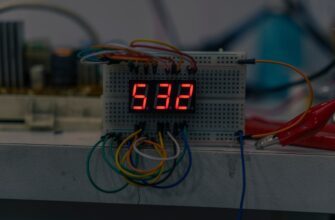- Introduction: The Critical Intersection of Halving and Mempool
- What is Bitcoin Halving?
- The Mempool: Bitcoin’s Transaction Waiting Room
- Why the Mempool Explodes During Halving Countdowns
- Tracking the Halving Countdown and Mempool in Real-Time
- Pre-Halving Checklist: Minimizing Mempool Mayhem
- FAQ: Bitcoin Halving and Mempool Explained
Introduction: The Critical Intersection of Halving and Mempool
As the Bitcoin halving countdown ticks closer, the mempool becomes a battlefield for transaction priority. This event, slashing mining rewards by 50%, triggers volatility, network congestion, and fee spikes. Understanding how the mempool functions during this period is crucial for navigating delays and costs. Here’s your strategic blueprint for the next halving.
What is Bitcoin Halving?
Bitcoin halving occurs every 210,000 blocks (roughly four years), reducing miner rewards by half. This deflationary mechanism caps Bitcoin’s supply at 21 million coins. Key implications include:
- Supply Shock: New BTC issuance drops, historically driving price surges.
- Miner Economics: Reduced rewards pressure inefficient miners, centralizing hash power.
- Market Psychology: Speculation peaks pre-halving, amplifying volatility.
The next halving is projected for April 2024, with real-time trackers monitoring block heights.
The Mempool: Bitcoin’s Transaction Waiting Room
The mempool (memory pool) is a network node’s holding area for unconfirmed transactions. When you send BTC, it enters this queue before miners include it in a block. Critical aspects:
- Fee Market: Users bid via transaction fees for priority. Higher fees = faster confirmation.
- Congestion Signals: A bloated mempool indicates network strain, escalating fees.
- Dynamic Sizing: Mempools vary across nodes, reflecting localized network conditions.
Why the Mempool Explodes During Halving Countdowns
Halving countdowns create a perfect storm for mempool congestion:
- Transaction Surge: Traders rush to move BTC pre-event, spiking demand.
- Speculative Activity: Arbitrage bots and derivatives trading flood the network.
- Fee Competition: Users overbid fees to avoid delays, creating feedback loops.
In 2020, average fees jumped 800% pre-halving as mempool transactions hit 100,000+.
Tracking the Halving Countdown and Mempool in Real-Time
Stay ahead with these tools:
- Halving Countdown: Blockchain.com’s Halving Clock or Buy Bitcoin Worldwide’s tracker.
- Mempool Analytics: Mempool.space (visualizes fee tiers) or Blockchain.com’s Mempool Stats.
- Fee Estimators: Earn.com’s fee calculator or built-in wallet tools for optimal timing.
Pro Tip: Monitor “sat/vByte” (satoshi per virtual byte) metrics—lower values mean cheaper transactions.
Pre-Halving Checklist: Minimizing Mempool Mayhem
Survive the chaos with these tactics:
- Time Transactions: Schedule non-urgent transfers weeks before the halving.
- Use SegWit Addresses: Reduce data size, lowering fees (start with “bc1” addresses).
- Batch Payments: Combine multiple sends into one transaction.
- Layer-2 Solutions: Leverage Lightning Network for instant, low-fee microtransactions.
FAQ: Bitcoin Halving and Mempool Explained
Q: How long can transactions stay stuck in the mempool?
A: Typically 72 hours before nodes drop them. Resubmit with higher fees to avoid expiration.
Q: Does halving directly cause higher transaction fees?
A: Indirectly—yes. Miner revenue drops, making fee income critical. Congestion from increased activity pushes fees up.
Q: Can I cancel a transaction in the mempool?
A: Not directly, but using Replace-By-Fee (RBF) or child-pays-for-parent (CPFP) can override or accelerate it.
Q: Will the halving make Bitcoin transactions slower?
A: Only if mempool congestion peaks. During calm periods, speed depends on fee levels, not halving mechanics.
Conclusion: Master the Mempool, Conquer the Halving
The Bitcoin halving countdown transforms the mempool into a strategic lever for users. By anticipating congestion, leveraging analytics, and optimizing transactions, you’ll turn potential chaos into opportunity. Stay vigilant, adjust fees wisely, and embrace the halving as a testament to Bitcoin’s unyielding scarcity.








